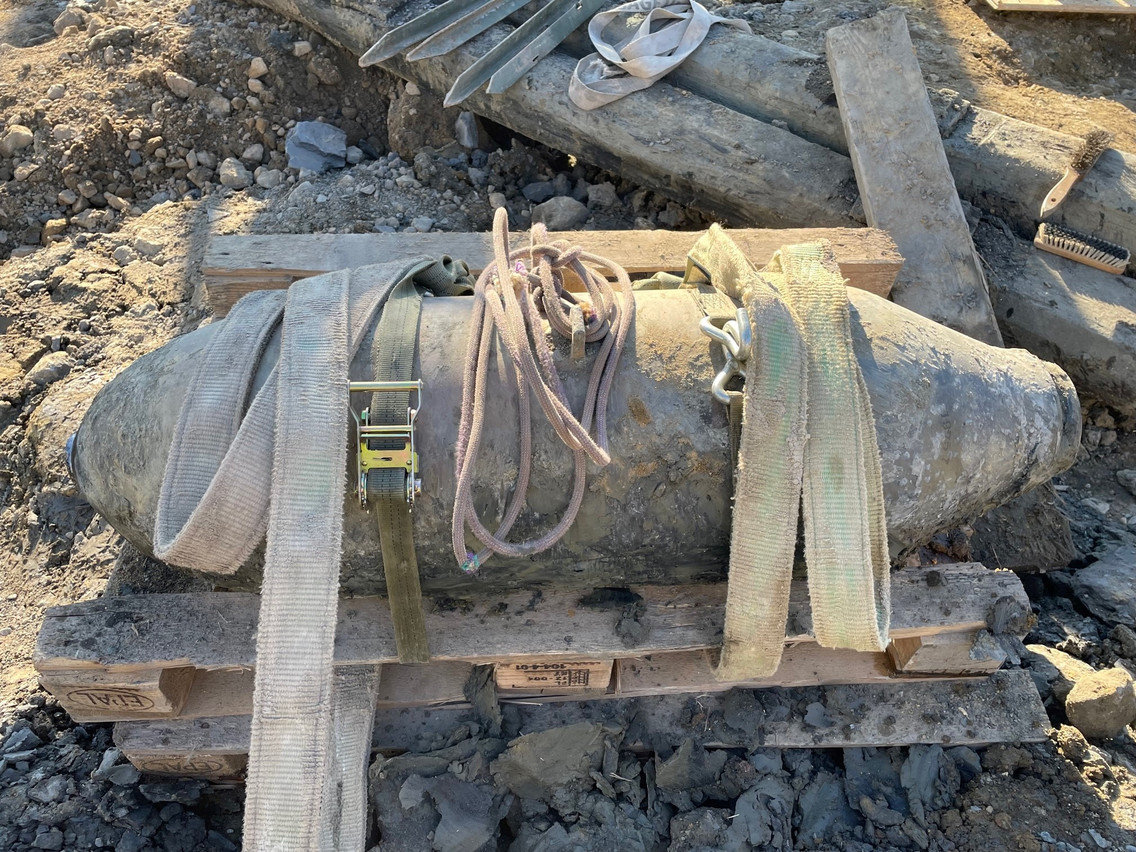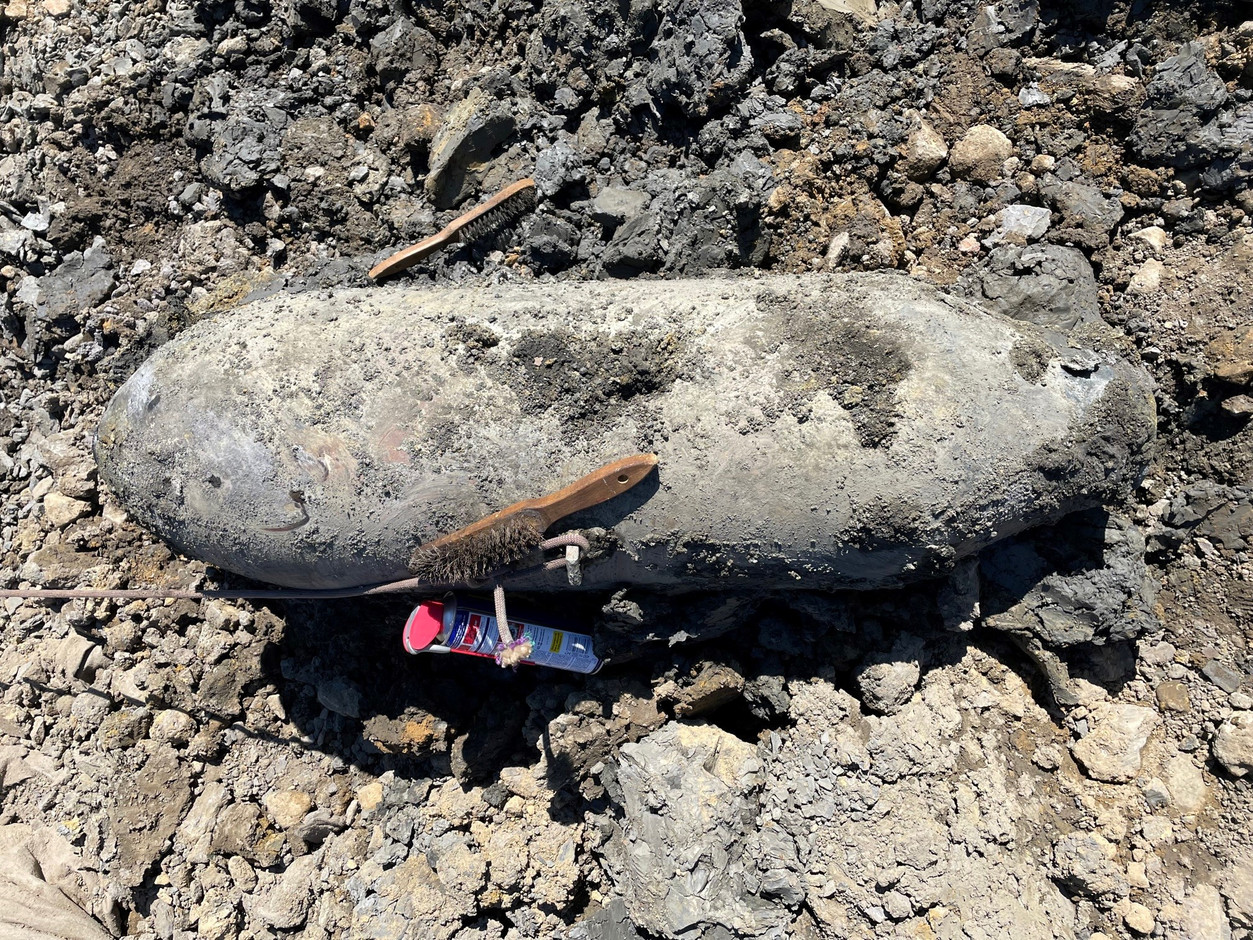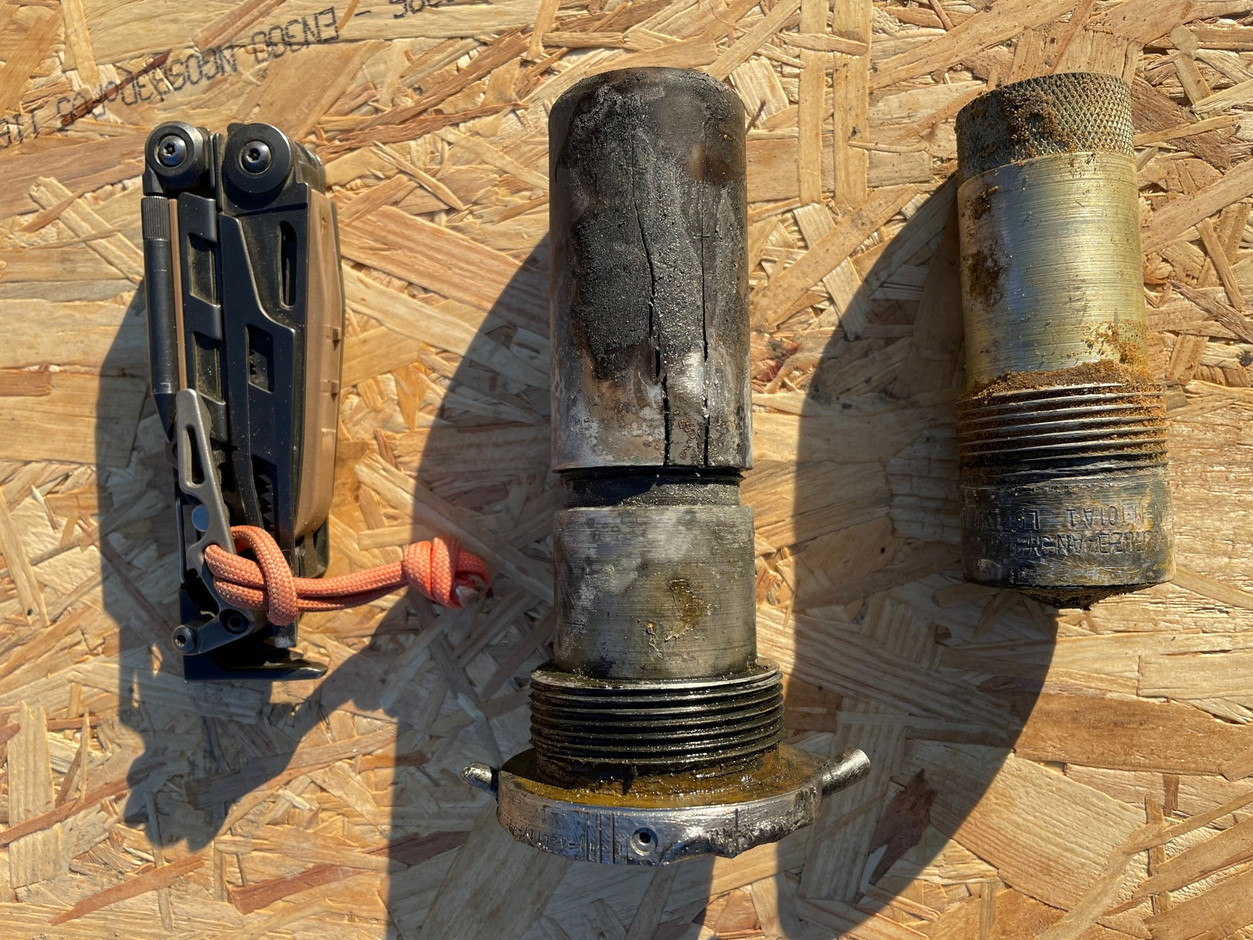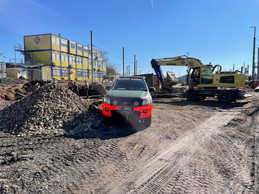“We must first of all congratulate the police and the CGDIS, who secured the perimeter quickly,” said Adjutant-Major Remy of the Sedal, the Luxembourg army's de-mining service, which carried out around 440 such operations last year.
On Monday, from 10am to 5pm, the area around Luxembourg’s central train station was cordoned off following the discovery of a bomb dating back to the Second World War, which was found during tram works near the Büchler bridge. “It was a 250kg American General Purpose aviation bomb with a nose and tail fuse. This is quite normal for this type of bomb,” the adjutant said.
“We defused the device on the spot. This type of bomb is quite difficult to detonate on site, because there are too many things around: gas pipes, buildings, houses and we were below the Findel air corridor. In the event of an explosion, the blast and the shrapnel could’ve been a danger to aircrafts at 300m altitude,” he said.
This contradicted information from Monday when officials had spoken of a controlled explosion.
In the last 20 years, the Sedal has intervened three times in the station area, defusing two 450kg bombs and one 110kg bomb.
440 interventions in 2021
Accustomed to this type of mission, the Sedal must respect a precise methodology. “First of all, there is the evacuation. This is what takes the longest. For the defusing, it takes one to one and a half hours per rocket,” explains Remy. “with 250kg, it was a medium-sized bomb. In Luxembourg, the devices we find can range from 10kg to one tonne.”
Last year, the Sedal was called out 440 times in the country, particularly in the north of Luxembourg. “We are regularly called out to construction sites. Luxembourg is developing, and the work of municipalities, new roads and new infrastructures reveal old explosive devices. Since the beginning of the year, we have already done 50 missions of this type in Luxembourg. We intervene once or twice a year on similar aviation bombs,” says Remy, stressing that the Sedal is trained and capable of defusing all types of bombs and ammunition, except for atomic devices.
The Sedal, consisting of seven de-miners and two corporals trained in munitions recognition and advanced first aid, also relies on archive photos for information on the various bombings during the Second World War. Old photos can be consulted on the website of the National Collection of Aerial Photography. There you can see pictures of a bombing of Bonnevoie from 11 October 1944.
The unit also has the latest technology, including drones to secure the site and the explosives, as well as monitoring the security perimeter. “We are regularly asked to check whether there is a risk of encountering a bomb before work is started.”

Archive of a photo taken during a bombing in October 1944 (Photo: National collection of aerial photography)
Once defused, the 250kg American bomb was taken away to be destroyed, which will occur in the next few days in a destruction area in Belgium.
The Sedal says if such a device is found, it is necessary to move away immediately and report it to the police, who will take the necessary steps to inform the specialised unit of the Luxembourg army, which is able to intervene 24 hours a day.
This article was originally published on and has been translated and edited for Delano.






